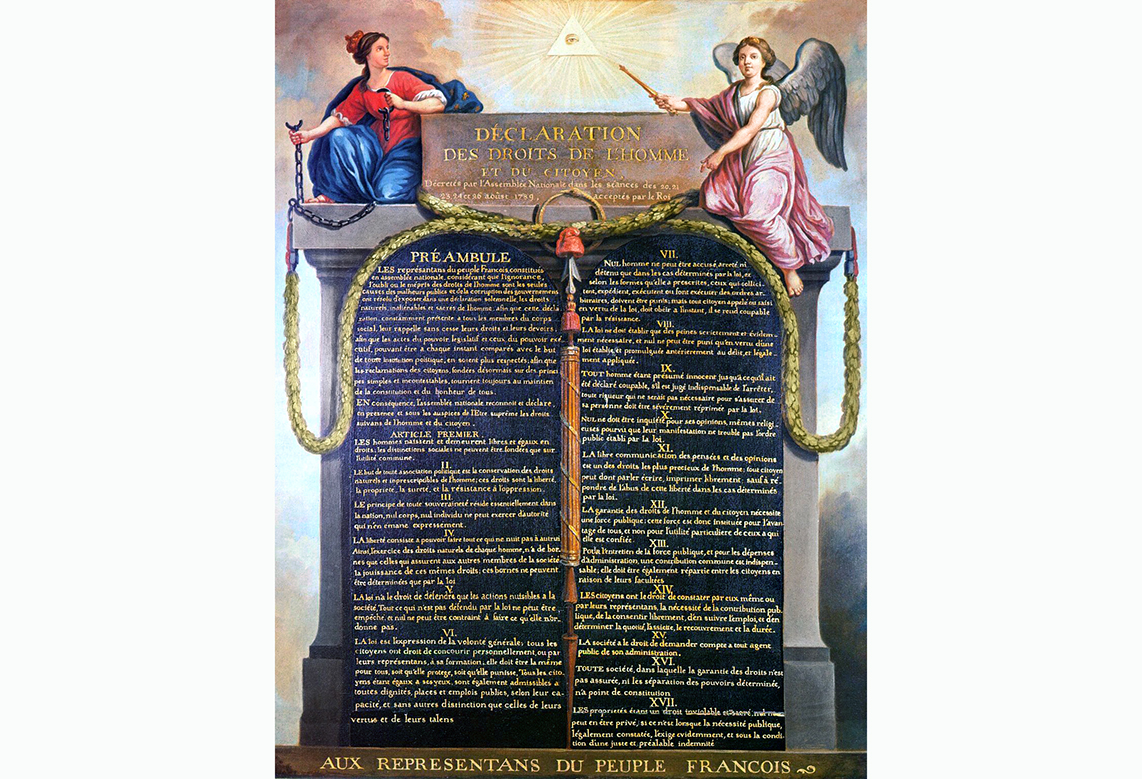
Declaration of the Rights of the Man and the Citizen
The French Declaration of the Rights of Man and the Citizen (Declaration des droits de l'homme et du citoyen) was adopted by the French National Constituent Assembly in 1789. It challenged the authority of the aristocracy and recognised the ‘liberty, equality and fraternity' of individuals. The Declaration declared that ‘Men are born and remain free and equal in rights... these rights being liberty, property, security, and resistance to oppression’. These were the principles that had inspired the French Revolution.
Though limited in who it protected (women for example, were excluded), the Declaration on the Rights of the Man and of the Citizen is considered an important precursor to modern day human rights legislation. The Declaration, striking in its resemblance to a modern bill of rights, contains many rights which are now a part of international human rights law including equality before the law, freedom of expression and the presumption of innocence.

